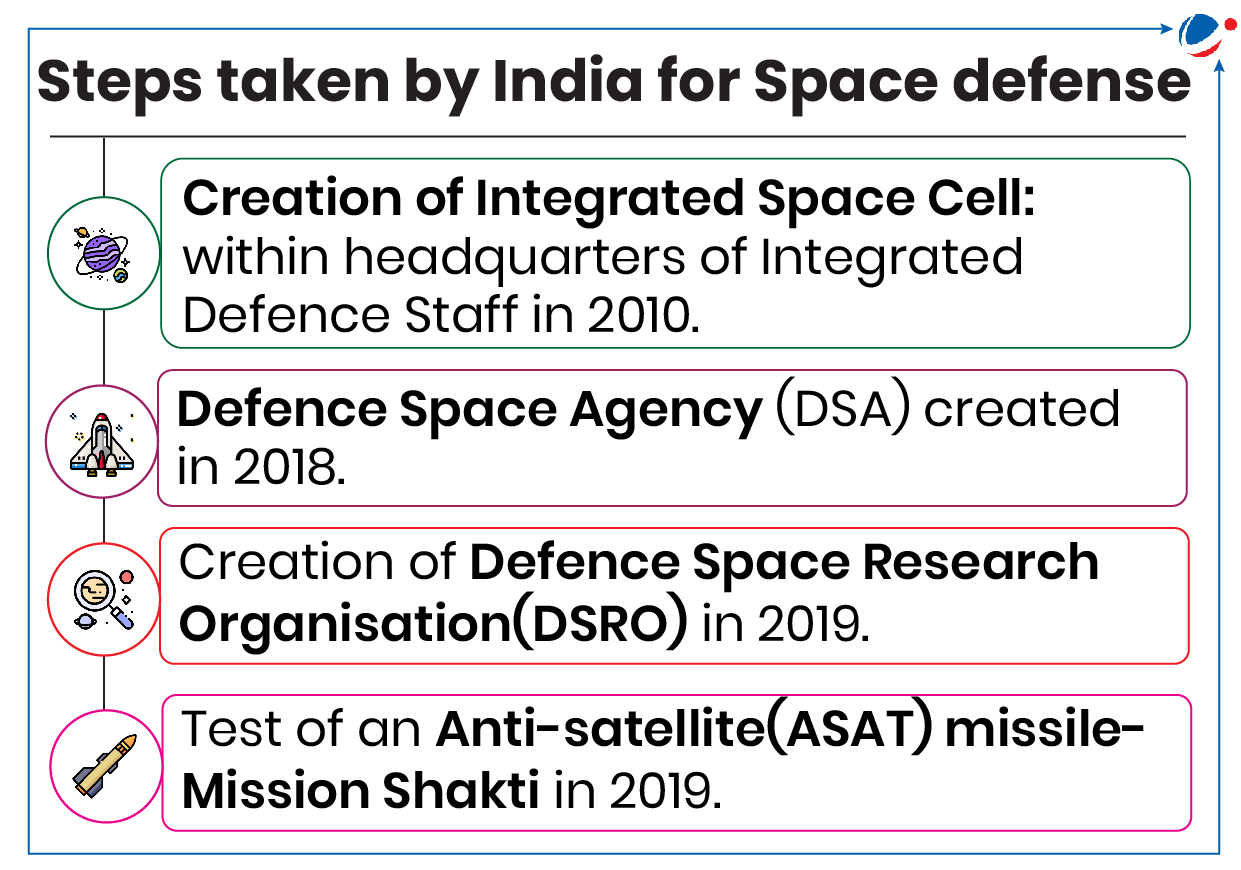AFSPA
Ministry of Home Affairs reimposed Armed Forces (Special Powers) Act (AFSPA) 1958 in order in “disturbed areas” of Manipur including Jiribam.
Key highlight of AFSPA
- Disturbed areas: A part or whole state/UT can be declared so by Governor of state, administrator of UT or by Centre if use of armed forces in aid of civil power is necessary to restore order.
- Grants Special power to armed forces: They can open fire against any person in contravention of law, arrest and search premises without warrant, etc.
- Immunity to Armed Forces personnel: Prohibits legal proceedings against them except with the previous sanction of the Central Government.
- Treatment of arrested person: Army authority is required to handover the arrested person to the officer-in-charge of the nearest police station with least possible delay.
- Applicability: Parts of Assam, Manipur, Nagaland, Arunachal Pradesh.
- Armed Forces (Jammu & Kashmir) Special Powers Act 1990 is applicable to disturbed areas of Jammu and Kashmir.
- Concern: Abuse of powers, Human rights violation including rapes and sexual assaults etc.
Other Related Information about AFSPA
|
- Tags :
- Justice Verma Committee
- AFSPA
- Disturbed Areas
- Justice Reddy Committee
- Santosh Hegde Committee
'Adaptive Defense' Strategy
The Raksha Mantri highlighted that traditional notions of war are being reshaped by emerging technologies and evolving strategic partnerships, necessitating an 'Adaptive Defense' strategy to address the new challenges.
About ‘Adaptive Defence’
- Definition: It’s a strategic approach where a nation’s military and defence mechanisms continuously evolve to counter emerging threats effectively.
- Principle of ‘Adaptive Defence’: It involves cultivating a proactive mindset to anticipate threats, adapt, innovate and thrive in the face of unpredictable circumstances.
- Capabilities needed for ‘Adaptive Defense’: Situational awareness, flexibility at strategic and tactical levels, resilience, agility, and integration with the futuristic technologies.
- Significance: Secure the future beyond just protecting borders; Designed to address both traditional (e.g., armed aggression) and non-traditional security challenges (e.g., Drug trafficking), counter the menace of information warfare against national security, etc.
Emerging Technologies: The Driver of Future Warfare
- Information warfare (IW): It relies upon networked information systems where an operation conducted in order to gain an information advantage over the opponent. E.g., Cyberwarfare.
- Lethal Autonomous weapon systems (LAWS): Weapons system once activated can engage targets without further human interference.
- Lasers & Electromagnetic railguns: For space-based attacks on satellites.
- Synthetic biology: Crimes like, illegal gene-editing, cyber-bio crime, bio-malware, bio-hacking, etc.
- Tags :
- 'Adaptive Defense' Strategy
- Future Warfare
Digital Arrest
Why in the News?
Recently, the Computer Emergency Response Team of India (CERT-In) has issued an advisory alerting citizens about preventing online scam, including digital arrests.
What is Digital Arrest?
- Digital Arrest refers to a type of online scam where fraudsters impersonate law enforcement officials such as Central Bureau of Investigation (CBI), Police, Enforcement Directorate (ED) etc. via phone calls, video calls and falsely accuse victims of involvement in criminal activities to extort money.
- According to Indian Cyber Crime Coordination Centre (I4C), Indians lost Rs 120.30 crore in digital arrest from January to April this year.
- Many of those carrying out these frauds are based in three contiguous Southeast Asian countries: Myanmar, Laos and Cambodia.
- Reasons for Rise in Digital Arrest in India: Surge in digital transactions; Lack of digital security awareness; Advancement in Techniques like use of AI voices, professional logos, and simulated video calls etc.
Initiatives by Government to Tackle Digital Arrest
- Indian Cyber Crime Coordination Centre (I4C): It has been set up by the Ministry of Home Affairs to deal with all types of cybercrimes in the country.
- Cyber Fraud Mitigation Centre (CFMC) has been established at I4C where representatives of major banks, Financial Intermediaries, Payment Aggregators, Telecom Service Providers work together to tackle cybercrime.
- Development of a system to identify and block incoming international spoofed calls displaying Indian mobile numbers appear to be originating within India: Central Government and Telecom Service Providers (TSPs) have devised mechanisms for the same to deal with fake digital arrests.
- Samanvaya Platform (Joint Management Information System): It provides analytics based on interstate linkages of crimes and criminals, involved in cybercrime complaints in various States/UTs.
- National Cyber Crime Reporting Portal: Launched as part of I4C to enable public to report incidents of cybercrimes.
- Best Practices shared by CERT-In: Verify the caller’s identity; Avoid sharing personal information; Never install remote access software on your device for anyone; Avoid clicking on links or attachments from unknown senders or installing apps shared by unknown individuals etc.
- Tags :
- Digital Arrest
- I4C
- CBI
Asset Recovery Interagency Network-Asia Pacific (ARIN-AP)
India, represented by the Directorate of Enforcement (ED), has been included in the Steering Committee of ARIN-AP.
- This will enable India to contribute to ARIN-AP’s decision-making and administrative responsibilities, furthering its mission to combat economic crimes.
- India will assume the presidency of the network and host the Annual General Meeting in 2026.
About ARIN-AP
- It is a prominent multi-agency network dedicated to tackling the proceeds of crime in the Asia-Pacific.
- It is also a member of the Global CARIN Network.
- CARIN is an informal network of law enforcement and judicial practitioners, specialist in the field of asset tracing, freezing, seizure and confiscation.
- Members: 28 member jurisdictions (including India) and nine observer.
- Tags :
- Global CARIN Network
- ARIN-AP
- Directorate of Enforcement (ED)
India's fourth Nuclear Submarine
India’s fourth nuclear-powered ballistic missile submarine (SSBN), referred to as S4*, was launched.
- India currently has 2 SSBNs operational i.e. INS Arihant & INS Arighaat (S3).
- Third SSBN Aridhman (S4) is currently undergoing sea trials.
About S4*
- S4* submarine boasts nearly 75 % indigenous content and is equipped with K-4 ballistic missiles, which have a range of 3,500 km.
- SSBNs are a potent and highly specialized military asset, which serve as a crucil component of nuclear deterrence.
- They are operated by only few countries namely US, Russia, China, UK, France and India.
- Tags :
- Nuclear Submarine
- SSBN Aridhman (S4)
- K-4 Ballistic Missiles
- INS Arihant
- INS Arighaat (S3)
India’s First Long Range Hypersonic Missile
DRDO successfully test-fired India’s first ‘Long-range Hypersonic Missile’ off Odisha coast.
- The hypersonic missile has a range of over 1500 kms. Only US, Russia and China had this technology earlier.
Technologies demonstrated during test

- Aerodynamic configuration for hypersonic manoeuvres for stability and control.
- Use of scramjet propulsion for ignition and sustained combustion at hypersonic flow.
- A scramjet is a form of air-breathing jet engine that uses the vehicle’s forward motion to compress incoming air for combustion and operates at hypersonic speeds.
- Thermo-structural characterisation to withstand extreme aerothermal environments during flights.
- Separation mechanism at hypersonic velocities.
Hypersonic Missiles
- These missiles can fly at speeds of at least Mach 5 (five times the speed of sound).
- The speed of sound is Mach 1, and speeds between Mach 1 and Mach 5 are supersonic and speeds above Mach 5 are hypersonic.
- Hypersonic weapons can manoeuvre midway which when combined with their high speeds makes their detection and interception extremely difficult.
Other Missile Systems of India
- Inducted: AKASH (Surface to Air Missile Systems), BRAHMOS (Long Range Supersonic Cruise Missile), etc.
- Advanced stage of induction: NAG (Anti-Tank Guided Missiles), ASTRA (Air-to-Air Missiles), Agni (Long Range Ballistic Missile) etc.
- Tags :
- DRDO
- Astra Missile
- Hypersonic Missile
- Akash Missile
Long Range Land Attack Cruise Missile (LRLACM)
Defence Research and Development Organisation (DRDO) conducted the maiden flight-test of a LRLACM.
- Designed as a successor to the Nirbhay cruise missile.
- Range: 1,000 km.
- Launch capability: From both mobile ground launchers as well as from ships.
About LRLACM
- It enables long-distance strikes against strategic targets from stand-off distances.
- Can perform various manoeuvres while flying at various altitudes and speeds
- Tags :
- LRLACM
- Nirbhay Cruise Missile
Pantsir Air Defense System (PADS)
Bharat Dynamics Limited, signed a MoU with Russia’s Rosoboronexport for “cooperation on Pantsir variants”.
About PADS
- The Pantsir-S1 system is a mobile, short-range air defence system equipped with both missile and gun capabilities.
- It can provide air defence to small military, industrial, and administrative facilities.
- It can defend against fixed- and rotary-winged aircraft, cruise missiles, and high-precision weapons.
Related news
Germany will deploy Israel's Arrow-3 missile interception system by 2025.
- Tags :
- PADS
- Pantsir-S1 system
- Arrow-3 Missile
Exercise Antariksha Abhyas 2024
India's 1st Space Defense Exercise Antariksha Abhyas 2024 held in Delhi.
- Exercise (Conducted by defense space agency (DSA)) aims to help secure national strategic objectives in space and integrate India’s space capability in military operations.

About Space Defense
- It accounts for prevention of potential threats to space assets (Kinetic, direct energy, jamming, cyber etc.) and existing countermeasures.
Need for Space Defense
- It can arise due to Military, Non-military threats, etc.
- Cyber-attacks: hacking on-board sensors, uplink and downlink jamming, tracking operations, etc.
- Anti-satellite weapons: Direct-ascent ASAT, orbital ASAT etc.
- Rendezvous and Proximity Operations: De-orbiting satellites, directed energy attack from proximity, deterrence etc.
- Non-Military Threats (uncontrolled and natural): Includes Space Debris and Radiation leading to failure of satellite systems.
- Military threats (controlled)
- Surveillance and Reconnaissance: Using high-resolution cameras, synthetic aperture radars etc. for weapon deployment, border security etc.
Challenges to Space defense in India
- Low Private investment, Need of National Defense Space Strategy, functional silos with lack of collaboration among stakeholders, long defense procurement procedure etc.
Way forward
- Passing draft new Remote Sensing Policy and the new Satcom Policy.
- Fast defence procurement procedures, R&D strategy for technology identification frameworks etc.
- Exploring integration of Satcom with battle plans and enabling close collaboration in DSA, DSRO and ISRO
- Tags :
- Space Debris
- Space Defense
- Defense Space Agency (DSA)
Articles Sources
Exercises in News
Exercise | Details |
MAHASAGAR
|
|
Garud Shakti |
|
VINBAX 2024
|
|
SIMBEX- 2024
|
|
SAREX-24 |
|
Poorvi Prahar |
|
AUSTRAHIND |
|
Sanyukt Vimochan 2024 |
|
SEA VIGIL 24 |
|
- Tags :
- Exercises in News
- SIMBEX
- VINBAX
Operation Sagar Manthan
The Narcotics Control Bureau (NCB) has seized 700 kg of Methamphetamine as part of Operation Sagar-Manthan.
- Methamphetamine is a powerful, highly addictive stimulant that affects the central nervous system.
About Operation Sagar Manthan
- Launched: by Narcotics Control Bureau (NCB) in coordination with the Indian Navy and Indian Coast Guard.
- Objective:
- Target drug trafficking through maritime routes
- Counter the threat to national security
- Realize vision of a Nasha Mukt Bharat by 2047.
- Tags :
- Methamphetamine
- NCB
- Operation Sagar-Manthan



